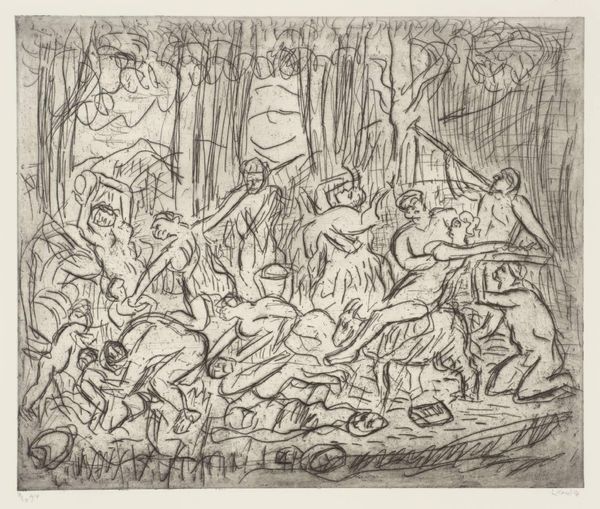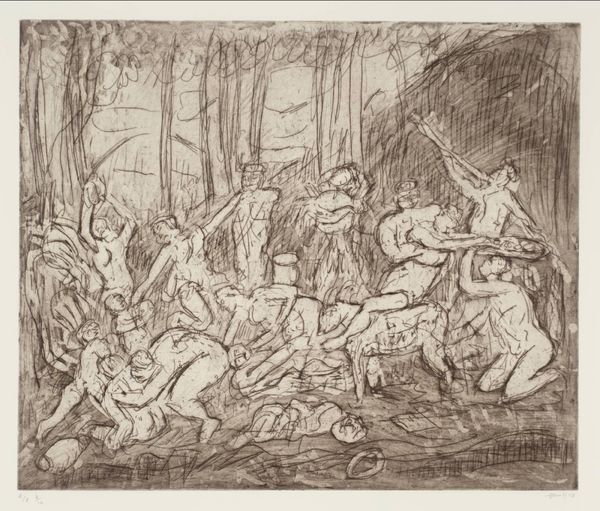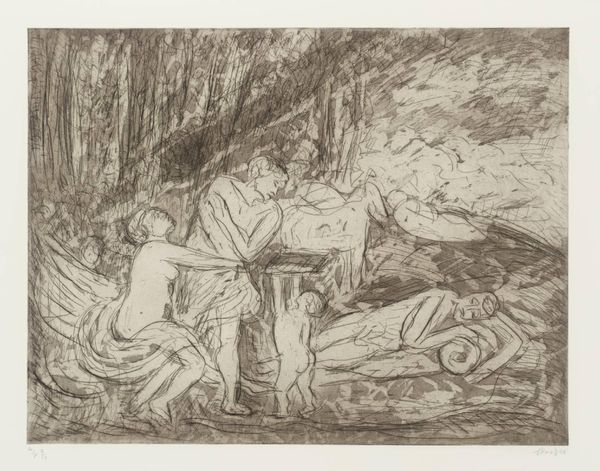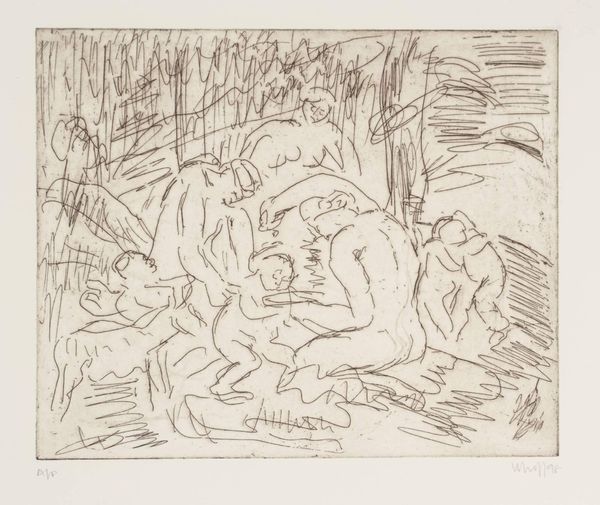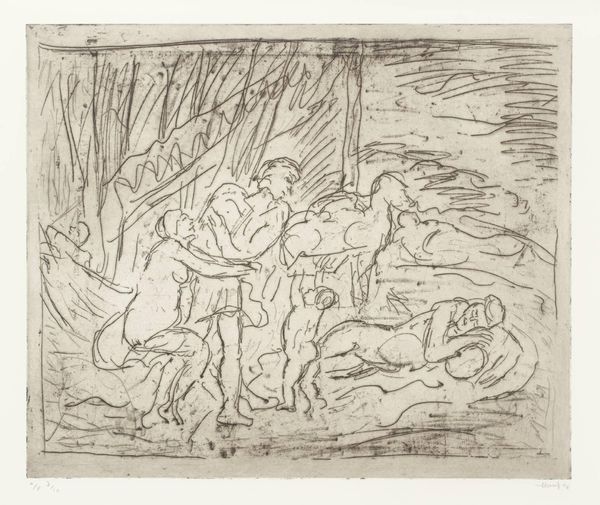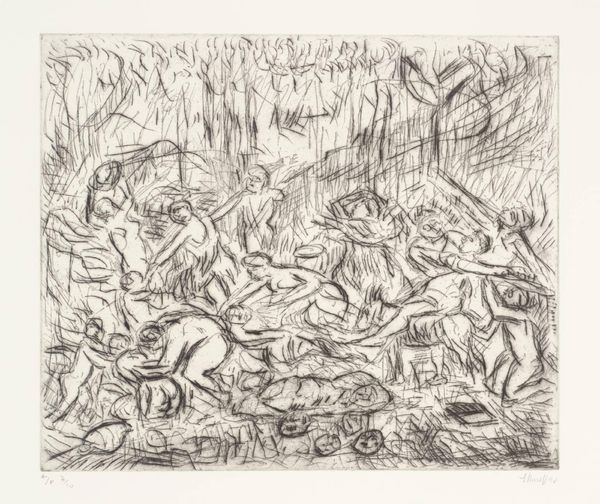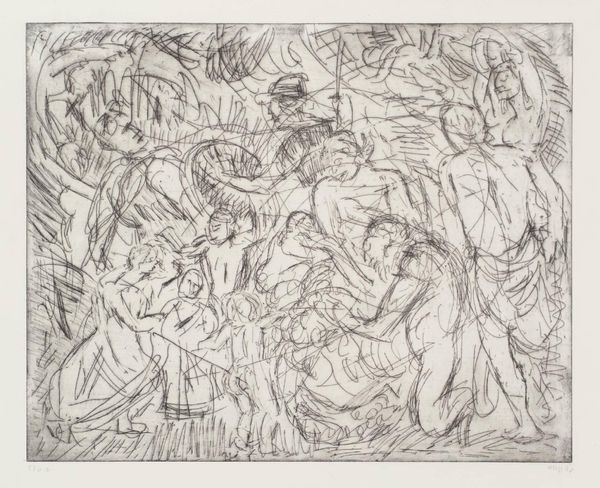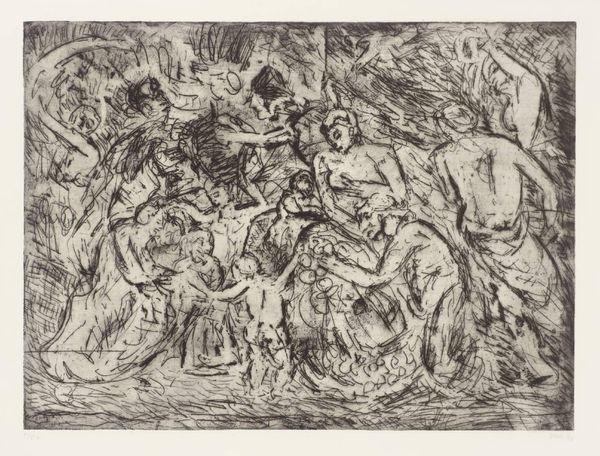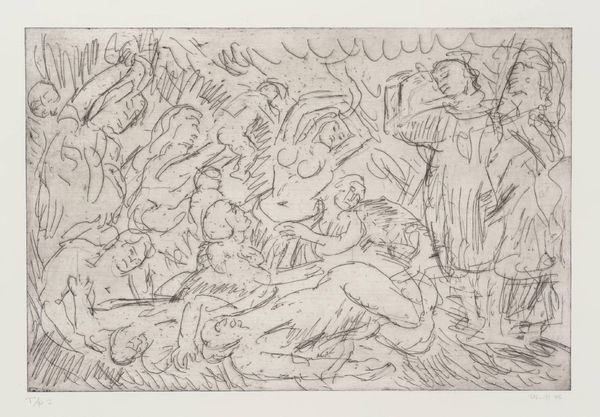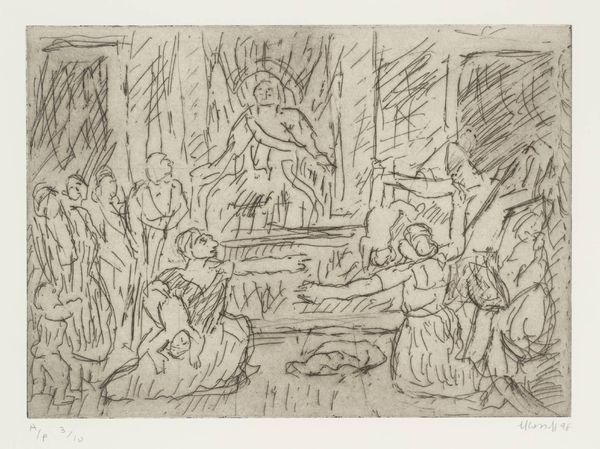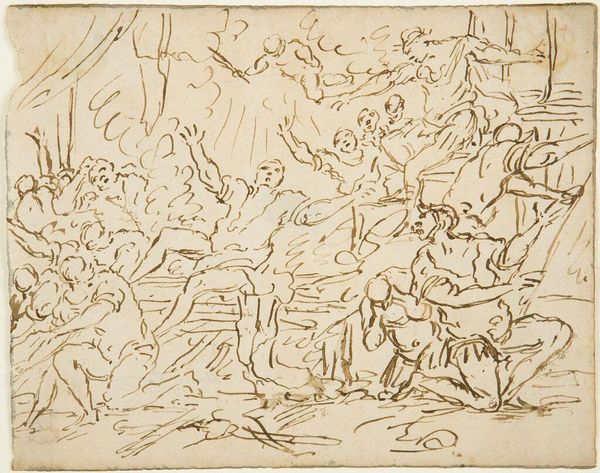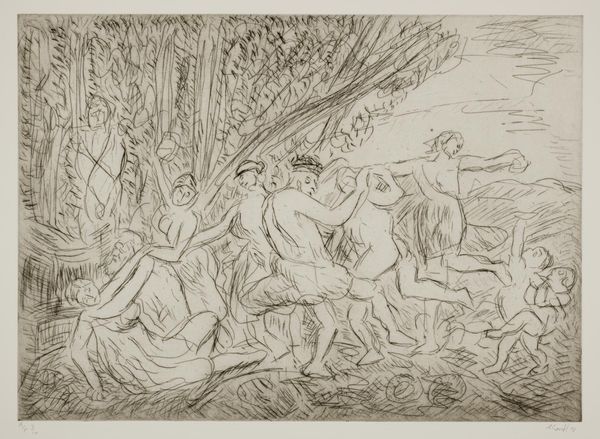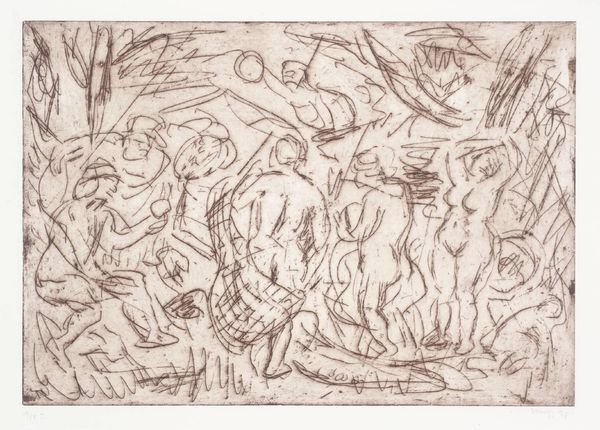
Copyright: © Leon Kossoff | CC-BY-NC-ND 4.0 DEED, Photo: Tate
Curator: This etching is Leon Kossoff’s "The Triumph of Pan (1)." It's currently part of the Tate Collections. Editor: Oh, my, it's chaos! A whirlwind of figures seemingly lost in a dense thicket. There's a sense of frenzied energy here. Curator: The title alludes to the Greek god Pan, associated with nature, wildness, and, shall we say, untamed revelry. Kossoff often explored classical themes through his own distinctive lens. Editor: It feels almost primal, doesn't it? Like a raw, unfiltered expression of Dionysian ecstasy. I see bodies intertwined, almost struggling, amidst the scratchy, urgent lines. Curator: Kossoff was deeply influenced by the socio-political climate of his time, and this work, though drawing from myth, could be seen as a commentary on societal unrest. He captures it well, through the wild and untamed feel of this image. Editor: Absolutely. It's a powerful reminder of the enduring human fascination with the wilder aspects of our nature. I'm not sure I would have gotten that from the image without you. Curator: My pleasure. It’s interesting how a classical theme can evoke such a contemporary rawness.
Comments
tate 6 months ago
⋮
http://www.tate.org.uk/art/artworks/kossoff-the-triumph-of-pan-1-p11730
Join the conversation
Join millions of artists and users on Artera today and experience the ultimate creative platform.
tate 6 months ago
⋮
This print is one of many etchings executed by Leon Kossoff in response to, and literally in the presence of, oil paintings by old masters; in this case The Triumph of Pan, 1635-6, by Nicolas Poussin (1594-1665), owned by the National Gallery, London. Tate owns four prints by Kossoff after this Poussin painting (Tate P11730-3) as well as two prints after a preparatory drawing by Poussin for the same painting (Tate P11734-5). Kossoff’s ability to explore a number of separate responses while making drawings and prints from a single subject is illustrated in these etchings. This version was printed in an edition of twenty with ten artist’s proofs; Tate owns number three of the artist’s proofs.

